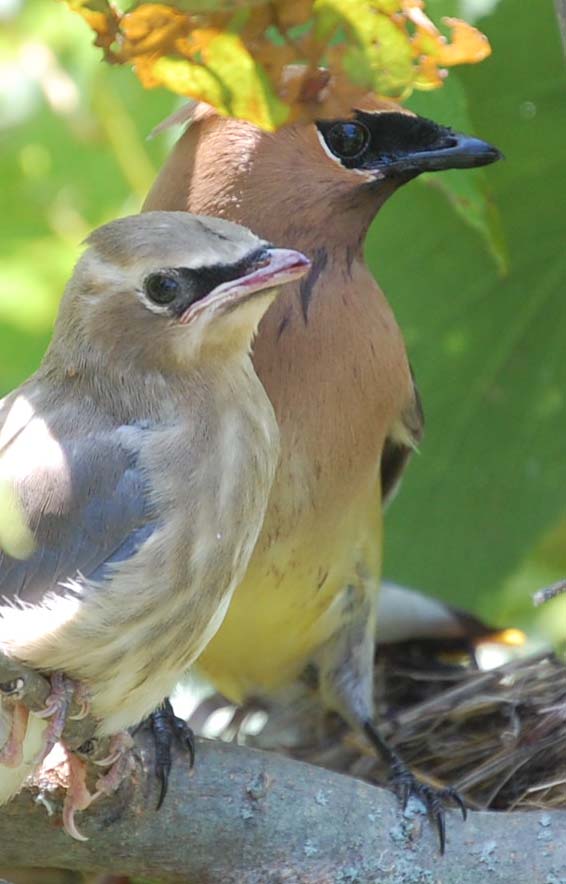
Richard and Diane Van Vleck Personal Pages The Home Habitat |

Once the nest was discovered, I realized the importance of the dead branches of the maple tree. While I have written elsewhere on this site about my fondness for snags, especially the huge ancient hickories down at the creek, this young maple with its dead limbs annoyed me. Every time I looked out the bandstand window to see this imperfect specimen, I reminded myself that the maple was on my short list for destruction. But, now I realized that many birds had used those dead branches this spring as a singing perch. They wanted to be heard and they wanted to be seen. Otherwise they could have perched on the fully leaved branches. Our home habitat is a democracy and they have out-voted me. The ugly young maple stays.
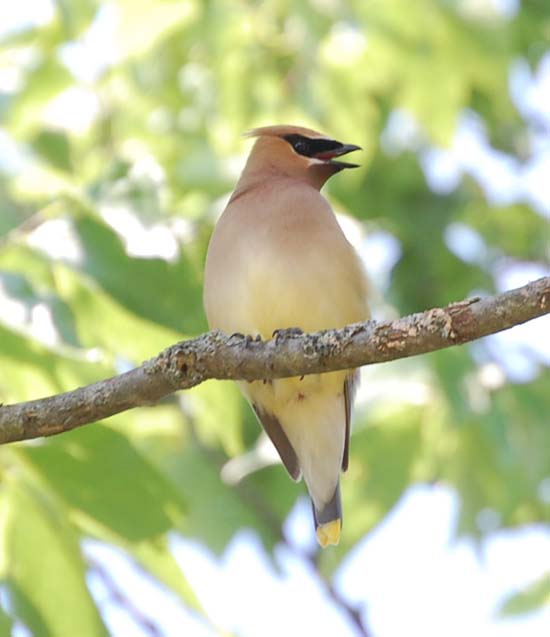
The soft blended colors and fine silky texture of the cedar waxwing's feathers make this, in my opinion, the most beautiful species in our home habitat. And, I say that, having just yesterday marveled at the remarkable breeding plumage of a male wood duck down by the creek. But, comparing the two is like comparing the best of two different musical genres - apples and oranges.
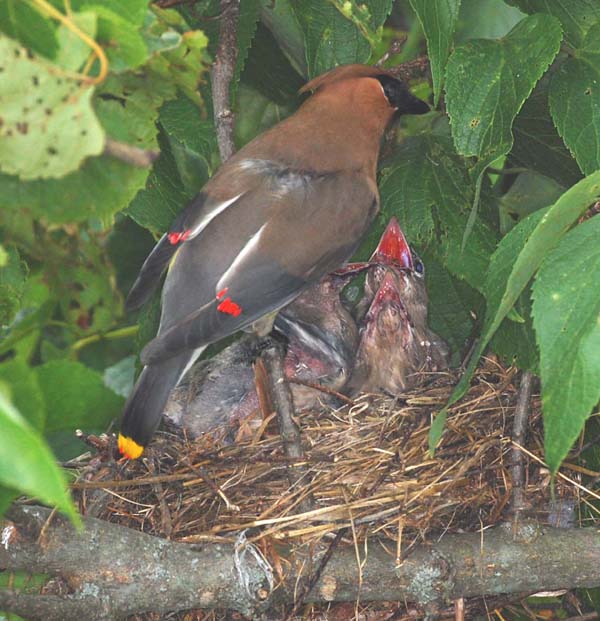
The red waxy tips of the cedar waxwing's secondaries are provided by a carotenoid pigment obtained from its diet. The terminal yellow band on the tail feathers is also derived from carotene in the diet. Now added to the list of things I want to someday do is to touch that waxy red tip of a cedar waxwing's feather. Considering the amount of molting each year of all the birds on our property, it's a wonder we're not knee deep in feathers. I seldom see one.
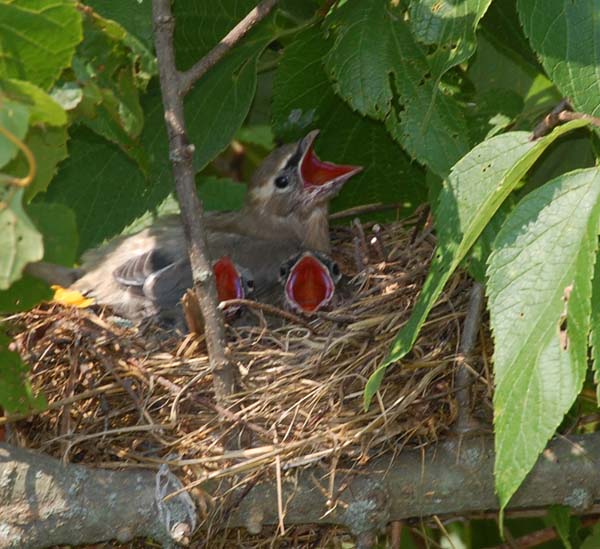
Cedar waxwing nestlings have a large gape, likely evolved to accommodate large berries. Their mouths also seem darker red than that of most species.
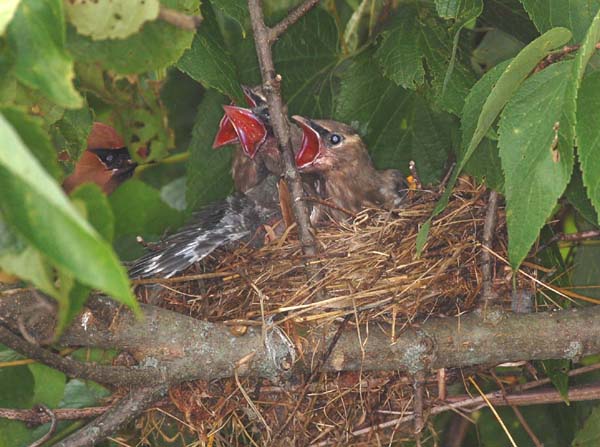
Adult cedar waxwings approach the nest with caution. Never flying directly to it, they flutter and hop among the branches, approaching slowly from the rear or side and often observing from a distance of a foot or so for several minutes. But, when ready to leave the nest, they fly directly away.
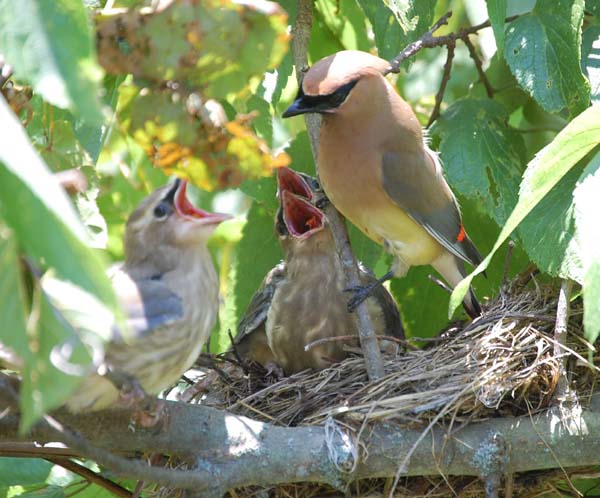
There were only three nestlings present when the nest was discovered. There may have been a fourth egg, but I didn't approach the nest to check. Also, I never saw both adults at the nest at the same time and didn't note any differences in plumage. They likely didn't have identical red feather tips.
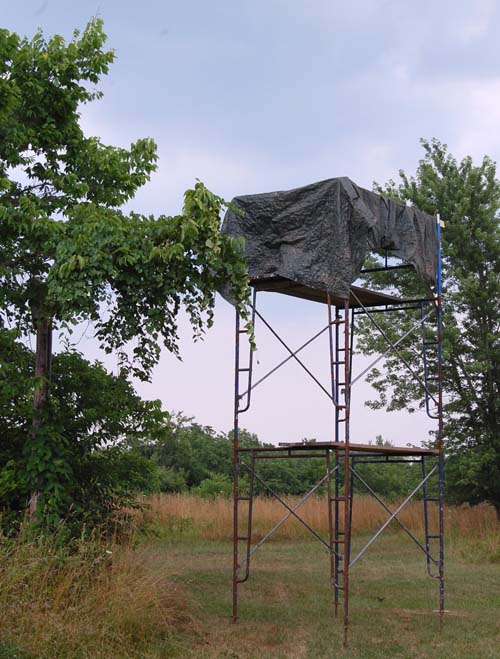
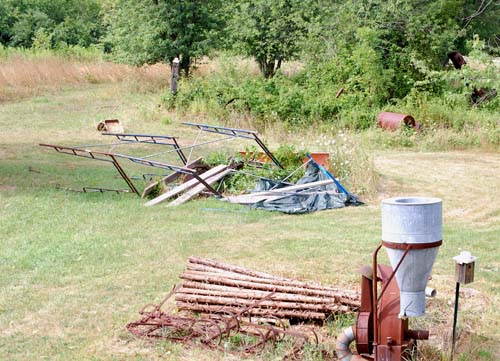
The aerial blind at the cedar waxwing nest. I wasn't smart enough to untie the tarp when not in use, but, at least, I was smart enough to not be in the blind during a sudden storm. As heavy as the scaffolding and planks are, the tarp acted like a sail in the strong wind.
May 20, 2012 update: The first cedar waxwing of the year was seen today, and, of course, it was in the ugly young maple tree.
| barn owl | American kestrel | purple martin | barn swallow | Eastern bluebird |
| tufted titmouse | Eastern phoebe | yellow shafted flicker | tree swallow | chimney swift |
| house wren | big brown bat | Carolina wren | brown thrasher | catbird |
| cedar waxwing | Northern mockingbird | |||
| Yellow warbler | Acadian flycatcher | |||
email richard@americanartifacts.com